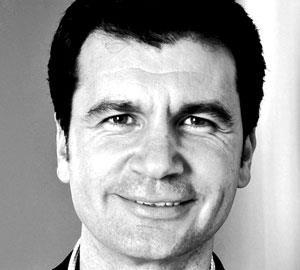...in the way we design, build, operate and refurbish buildings. We will only achieve real carbon reduction through greater professional collaboration
Big as this recession may turn out to be, climate change will be even bigger, as Sir Nick Stern, author of the Review of the Economics of Climate Change, pointed out recently. So the launch of BSD could not be more timely.
The buck stops with the built environment: it is responsible for almost half of global carbon emissions. Business as usual is dead, but that’s not something we should be afraid of. This industry can be at the forefront of finding solutions that are not only greener, but have social and economic benefits too. At every stage of the supply chain, the climate crisis means those who survive will do so because they have found profitability in sustainability.
It will take a revolution in how we design, build, operate and refurbish our buildings if we are to get to grips with reducing carbon emissions to the extent required. As we all know, high performance, environmentally responsible solutions require much greater collaboration and integration between architects, building services engineers and their clients.
Until now design journals have tended to divide with the discipline – architecture for architects, engineering for engineers, property for clients. BSD aims to look at the issues holistically and its launch is testament to the importance of integrated design in mainstream sustainability thinking. The UK Green ��ɫ����TV Council is delighted to be able to contribute to it.
This year will be a crucial one in the fight against climate change. From Barack Obama’s inauguration last month through to the Copenhagen climate change negotiations in December, 2009 will see an unprecedented focus on international action to cut carbon. How do we achieve radical cuts in emissions in the developed world, while putting rapidly developing economies on a pathway to sustainable growth? With the stakes so high, what has the design community got to offer?
There are some wonderful examples of cutting edge sustainable design, such as the Gardens by the Bay project by Atelier Ten and Wilkinson Eyre Architects in Singapore (to be featured in BSD next month), which combines a wide range of passive and active technologies to deliver an extraordinary design that will be close to zero net carbon in a tough climate. But some exemplar projects are not always so clear cut. Perhaps we should be asking “What actually is sustainable design?” Are there places in the world where any kind of green building is a contradiction in terms?
Business as usual is dead, but that’s not something we should be afraid of. This industry can be at the forefront of finding solutions
Maybe we don’t have to look so far from home to ask that question – what about building in floodplains, or zero carbon buildings not connected by public transport? Are “eco-towns” the great sustainability blueprint of the future, or a disaster waiting to happen? Should this be a concern for the design community, or is that someone else’s problem?
What undoubtedly is a concern is the plethora of both government and industry initiatives, particularly on energy and CO2, but also on other environmental issues. Is this really serving the industry well and delivering the best solutions?
At the very least, many of us are all too aware of the discrepancies and idiosyncrasies of EPCs, DECs, the Carbon Reduction Commitment and various other well-intentioned tools and regulations. Measuring and accessing reliable data on which to base sound design decisions is in itself a huge problem.
Good regulation is part of the solution, but a key driver is undoubtedly an ability to ascribe value to a sustainable building. The evidence base is growing but still patchy. How can we work together to put forward the positive business case for green building, so important for the investors and developers?
There are some tough questions to be asked. Is there a role for the design community in tackling our existing building stock, including homes? After all, it is 99% of the problem. Or should we be putting all our efforts into de-carbonising the grid, and let the rest take care of itself?
If we’re to rise to the challenges that face us as an industry, we’ll need to get to the bottom of these issues. There is plenty for BSD to get its teeth into, and we’ll do what we can to make sure that debate leads to action and genuine progress.
Source
��ɫ����TV Sustainable Design
Postscript
Paul King is chief executive of the UK Green ��ɫ����TV Council,






















No comments yet